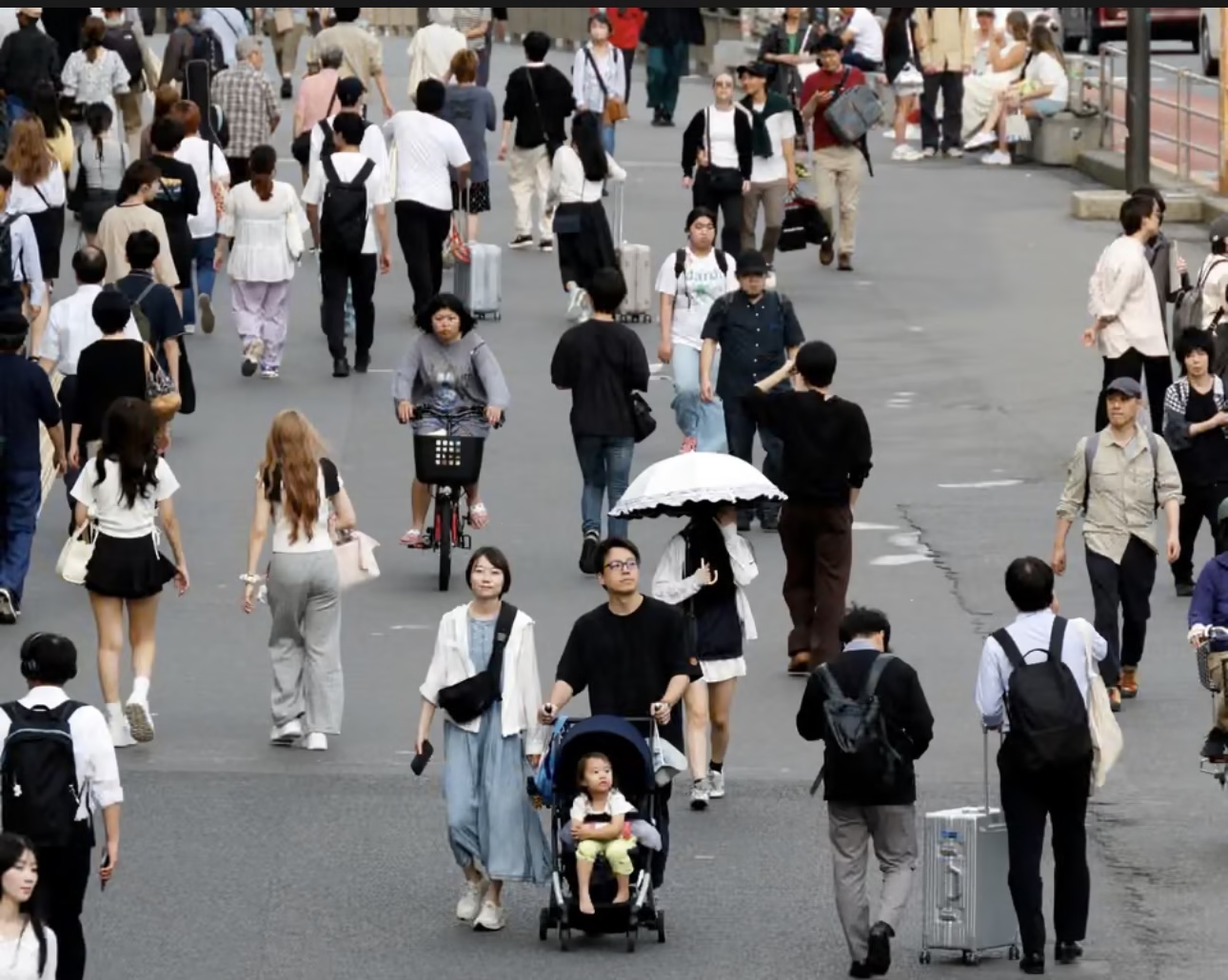Japan’s New Wave: Diversity Rising as Birthrate Falls — But Xenophobia Surfaces

As Japan’s native birthrate continues its relentless decline, the country is undergoing a quiet but profound social shift: embracing more foreign workers, welcoming children born to immigrant parents, and redefining what it means to be Japanese. Yet this transformation is not without turbulence — rising nativist voices and xenophobic sentiment threaten to fracture social cohesion.
Demographic Crisis Fuels Policy Shift
Japan faces one of the world’s steepest population declines. Native births have dropped year after year, and the workforce is aging rapidly. In response, the government is now leaning heavily on immigration and foreign labor to sustain its economy.
In 2024, Japan recorded a historic 22,878 births to foreign parents — about 3.2 % of all births that year — a number that has surged more than 50 % in a decade.
Japan’s foreign‐resident population now approaches 4 million, and foreign workers make up a growing share of the labor base.
Industry after industry — from construction and agriculture to elder care and services — reports labor shortages so acute that they threaten to derail growth. A state-backed think tank warns of a looming shortfall of nearly one million foreign workers by 2040 unless policy changes are accelerated.
Policy Responses: Promises & Limits
To cope, the Japanese government has rolled out several reforms targeting foreign workforce policy:
- It plans to overhaul the long-criticized Technical Intern Training Program, allowing trainees to upgrade to “skilled worker” status and extend their stay to up to five years.
- Pending legislation would require foreign workers to stay at least two years in certain jobs before permitted transfers.
- Many Japanese firms have reaffirmed commitment to workplace diversity, despite global political pressure to scale back such initiatives. In a Reuters survey, more than 75 % of firms reported no intention to cut diversity efforts.
Still, the path is cautious and constrained. Japan approves only a few thousand naturalizations each year — in 2024, about 8,863 foreign residents gained citizenship. Meanwhile, permit pathways remain restrictive, and full integration faces structural and societal barriers.
Rising Backlash: Xenophobia in the Open
As diversity grows, so too does resistance. Far-right political forces, social media mobs, and some local governments are echoing fears that Japan’s identity is under threat.
In Toyota City, for example, foreign workers have reported facing hostility from arms of the far right.
A cooperation program between Japan and four African nations — including Ghana — intended for youth and sports exchange was misinterpreted by some Japanese residents as a backdoor immigration plan, triggering protests and heated backlash.
In the city of Kawaguchi (Saitama Prefecture), where many Kurdish immigrants reside, local leaders have called for stricter crackdowns and public sentiment has at times turned virulent.
Critics argue that such xenophobia is fueled by misinformation, economic anxiety, and nationalist rhetoric. The opposition voices warn that foreign workers might take jobs from Japanese or erode public services — sentiments that resonate in some rural or isolated communities.
The Stakes for Japan — and Beyond
Japan now stands at a demographic and moral crossroads: continue resisting change and risk economic stagnation, or embrace new models of diversity and inclusion.
Proponents of openness emphasize the contributions foreign workers make — not just in factories or farms, but in enriching culture, innovation, and societal resilience. Advocacy groups like the Solidarity Network with Migrants Japan (SMJ) continue pushing for stronger legal protections and genuine inclusion.
For Ghanaian readers on NsemGh, Japan’s shift offers both a mirror and a lesson. While Japan’s plight is uniquely severe, many countries face similar challenges: low birthrates, aging populations, migration, and the demand for new definitions of national identity.
Whether Japan succeeds in weaving a new tapestry of diversity without unraveling social harmony remains to be seen. But one thing is clear — the old model of demographic growth no longer applies, and resistance to change may prove far more costly than change itself.
www.nsemgh.com

